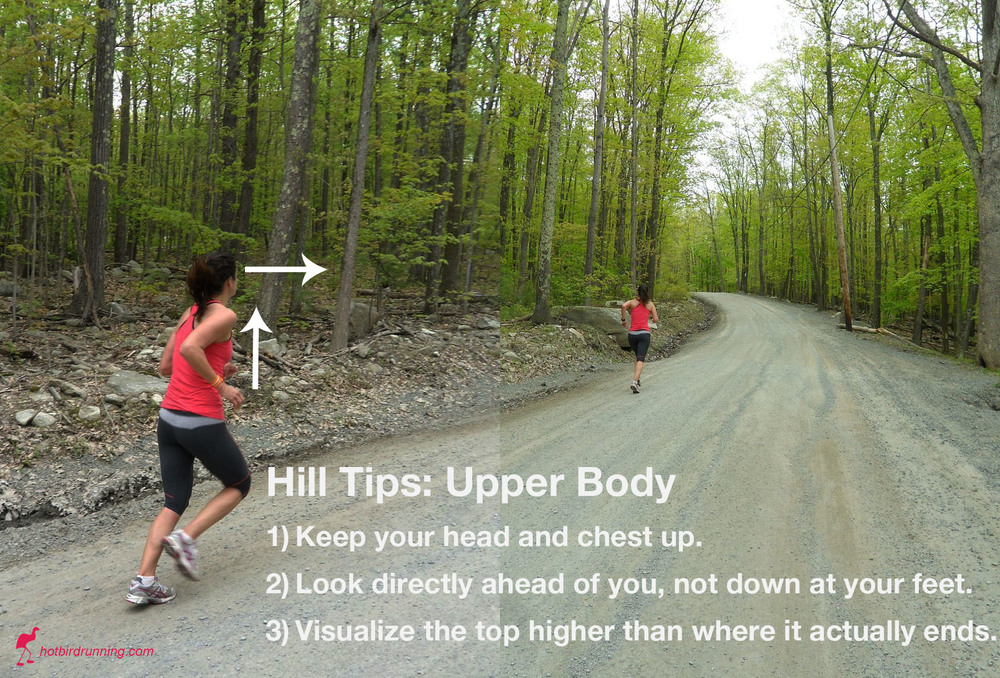Running hills builds strength, stamina and improves running form. Here are our top tips for proper form when running hills.
Running Uphill
PACE: Run the first third of the hill relaxed and slightly accelerate the last part. You are aiming for equal effort. Try to maintain the same effort not pace you were running on the flat. You can make up for the time of the downhill.
For Long Hill Repeat Workouts: (1) Accelerate over the first 10-20 steps increasing to your fastest pace you can maintain with good form for the rest of the hill. You should be breathing hard at the top, but not gasping for air, and (2) maintain a consistent pace the entire length of hill and finish each repeat in the same amount of time as the others. This helps you avoid starting out too fast and understand pace limits for races.
MENTAL: Visualize the top of the hill ending 20 meters higher than where it actually does. This encourages you to always run through the top of the hill rather than relax once you get there. Also, learn to respect the hill, but feel confident in your ability to conquer it, even dominate it – it makes a difference!
HEAD/TORSO: Keep your head and chest up. Don't slouch. Many runners put their head down, which wastes energy by throwing off their running form. Fix your gaze directly in front of you.
ARMS: Use your arms in a straight back and forward and up motion to drive you up the hill – not across your body. Concentrate on really overusing the arms to help power up. Increase your arm swing as if you are using ski poles to help your legs push you up the hill.
SHOULDERS: Before tackling a hill, do a shoulders check. Are they creeping up to your ears? If so, roll them forward then backward and wiggle out your hands and arms to relieve tension.
FEET: You want your feet to land underneath your hips not out in front of you. When you start running uphill, shorten your stride. Push off your toes to create the upward motion that propels your body up and forward. Think: shorter strides; up on your forefeet; pushing off your toes; and knees high to help your stride and keep you upright.
Running Downhill
PACE: Accelerate gradually into the downhill – do not sprint (which causes muscle soreness later on) or fight gravity by hitting the breaks (which fatigues the quads).
MENTAL: Visualize gravity pulling you down the hill and stay in control.
HEAD/TORSO: Maintain an upright body posture with a slight forward lean on steep hills to go with gravity – always keeping your torso perpendicular to the horizontal running surface. Keep your head and chest up and eyes looking ahead
ARMS: Use your arms for balance as you let gravity help your upper body push you down hill – let your arms swing to the sides and across your body if that helps you keep your balance.
STRIDE: Slightly lengthen out your stride to take advantage of the hill with feet landing underneath you and knees bent. Downhill running can be very injurious to knees, so try not to "pound" the road on downhills.
FEET: Land on the mid-foot, not on your heel, and underneath your knees. Practice landing softly to protect the knees.



